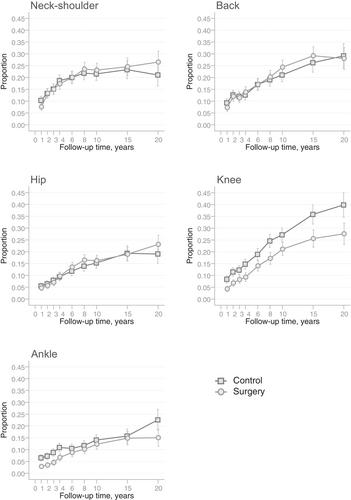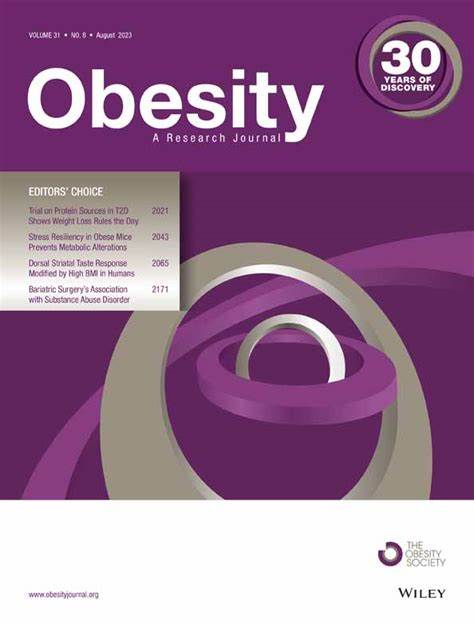Work-restricting musculoskeletal pain after bariatric surgery or usual obesity care in the Swedish Obese Subjects study
Abstract
Objective
The objective of this study was to study the recovery from, and incidence of, work-restricting musculoskeletal pain after bariatric surgery compared with usual obesity care.
Methods
Pain in different body regions was monitored using questionnaires in the nonrandomized, prospective, controlled Swedish Obese Subjects (SOS) study, which included 2007 participants treated with bariatric surgery and a matched control group of 2040 participants receiving usual obesity care at primary health care centers. Self-reported pain in the neck and shoulders, back, hips, knees, and ankles was captured from questionnaires administered at baseline and after 1, 2, 3, 4, 6, 8, 10, 15, and 20 years.
Results
Compared with matched controls, bariatric surgery was associated with better recovery from baseline work-restricting knee and ankle pain in both the short (1–4 years) and long term (up to 20 years), as well as from back and hip pain in the short term. In participants without pain at baseline, bariatric surgery was associated with a lower incidence of developing new pain in the knee and ankle in the short and long term.
Conclusions
Bariatric surgery was associated with better recovery from pain, primarily in weight-bearing joints, as well as with prevention of pain development in the knee and ankle compared with matched controls receiving usual obesity care.


 求助内容:
求助内容: 应助结果提醒方式:
应助结果提醒方式:


